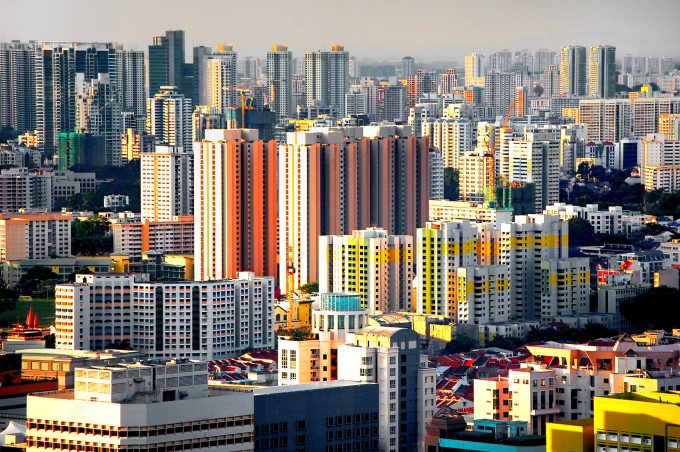UPS drama – a Premium back and forth on key bits and pieces
Network power
TFII: SOLID AS USUALMAERSK: WEAKENINGF: FALLING OFF A CLIFFAAPL: 'BOTTLENECK IN MAINLAND CHINA'AAPL: CHINA TRENDSDHL: GROWTH CAPEXR: ANOTHER SOLID DELIVERYMFT: HERE COMES THE FALLDSV: LOOK AT SCHENKER PERFORMANCEUPS: A WAVE OF DOWNGRADES DSV: BARGAIN BINKNX: EARNINGS OUTODFL: RISING AND FALLING AND THEN RISING
TFII: SOLID AS USUALMAERSK: WEAKENINGF: FALLING OFF A CLIFFAAPL: 'BOTTLENECK IN MAINLAND CHINA'AAPL: CHINA TRENDSDHL: GROWTH CAPEXR: ANOTHER SOLID DELIVERYMFT: HERE COMES THE FALLDSV: LOOK AT SCHENKER PERFORMANCEUPS: A WAVE OF DOWNGRADES DSV: BARGAIN BINKNX: EARNINGS OUTODFL: RISING AND FALLING AND THEN RISING

PRESS RELEASE
High-tech segment along with Singapore’s strategic location and strong trade relationships has potential to fuel trade growth in the coming decade
Singapore, March 21, 2023 – The value of Singapore’s trade with 11 other major Asian markets could grow by over 50% by 2030, according to an industry study released by UPS. Clearing the Runway for Intra-Asia Trade sheds light on trade growth drivers, potential headwinds, and multistakeholder action required to unlock the 2030 opportunity.
Download the UPS intra-Asia study here.
Singapore’s trade with other major Asian markets set for 50% boost
Trade in 12 key markets[1], referred to in the report as the Asia 12, accounts for 88% of intra-Asia trade today, and could more than double in value from USD 6.4 trillion in 2020 to USD 13.5 trillion in 2030.
Trade is critical to Singapore’s economy, valued at more than three times that of its gross domestic product (GDP). As an essential hub for facilitating regional trade flows, UPS estimates that the value of Singapore’s trade with the rest of the Asia 12 could potentially grow from USD 450 billion in 2020 to USD 679 billion also by 2030, underpinned by the country’s strategic location and strong trade relationships.
Intra-Asia trade holds incredible potential over the coming decade, built off the immense economic success that key regional economies have accomplished in recent years. Through the strength of UPS’s global network and extensive customs brokerage expertise, the company has been helping Asian governments, industry partners, and customers navigate global trade over the last five decades. This report combines that expertise with fresh insights to explore opportunities and challenges in intra-Asia trade over the coming ten years, and beyond.
High-tech segment will drive Singapore’s trade growth
Across the Asia 12, the four segments driving the surge in intra-Asia trade are retail, industrial manufacturing and automotive (IM&A), high-tech, and healthcare. These segments accounted for 76% of Singapore’s trade with the rest of Asia, and 75% of total intra-Asia trade in 2020.
In Singapore, the high-tech segment is a key export industry that constitutes nearly half of the country’s intra-Asia trade. It will drive future growth given the rise in digitalisation across the Asia 12 and particularly in ASEAN markets. Singapore is well-positioned to ride this digital growth facilitated by several key trade lanes including its economic interdependence with Malaysia and potential benefits through foreign direct investment in the Vietnamese manufacturing sector.
Multistakeholder effort needed to unlock Singapore’s trade potential
While intra-Asia trade holds significant potential, there exist a number of barriers that, unless addressed, may stagnate trade within the Asia 12. Specifically for Singapore, as a regional trade hub that is highly dependent on the free flow of goods and people, geopolitical tensions or restrictive trade policies across Asia – including tariffs and other punitive measures – could impact its long-term trade prospects.
Hence, multistakeholder action is required to reduce impediments to regional trade and harness the opportunities to steer intra-Asia trade towards take-off. Singapore-based stakeholders and businesses with trade interests in Asia must build resilience against potential headwinds while at the same time being ready to capture opportunities presented by the growth in intra-Asia trade. Three key actions that can be taken include digitalising completely, diversifying supply chains and promoting the integration of MSMEs (micro-, small-, and medium-sized enterprises) into regional supply chains.
“Small businesses are vital to the Singapore economy, and this report highlights the importance of making sure all businesses get the support they need so that the full potential of intra-Asia trade can be realised over the next decade,” said Chika Imakita, managing director at UPS Singapore.
“At the macro level, Singapore has consistently made strategic moves to position itself as an essential hub for regional trade flows. Our role at UPS is to combine our suite of digital, small business-ready solutions with our expertise in customs brokerage and supply chain mapping to ensure our customers continue to optimise the current trade environment in a way that keeps them profitable, successful and sustainable for the long term.”
Comment on this article